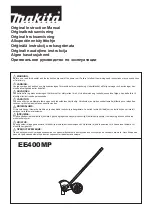
Figure 3: Ratio Control and I™ (Negative) Ratios
Typical patch points include: a mixer’s channel or subgroup inserts when using
the 262 on individual instruments or tracks; the mixer’s main outputs or bus
inserts when mixing; an instrument preamp’s effects loop when using the 262
for guitar or bass; main outs of a submixer (e.g., drum mixer) as
the signal is
sent to main mixer
;
between a DAT’s output and an analog cassette input.
When using a chain of processors, the 262 may be placed either before or after
effects or dynamic processors. However, if you are using the 262 for speaker
protection, the compressor should be as close to the amplifier as possible in the
signal chain. We recommend you use common sense and experiment with dif-
ferent setups to see which one provides the best results for your needs.
Mixing Board
If you wish to compress a particular track of a multitrack recording or one
channel of a live performance, connect a cable from the audio source’s output
jack to the 262 INPUT, and connect the 262 OUTPUT to a line input jack (bal-
anced or not), or the 262’s INPUT and OUTPUT can be wired to an insert point.
In the latter case, the signals will most likely be unbalanced as is typical of
most insert signals.
Note: The amount of compression is directly related to the level of the input
signal. However, depending upon your system’s setup, it may not always be
crystal clear as to which volume controls in your chain affect input level and
which affect output level. If the 262, in relation to your mixer channel’s volume
controls, is “pre-fader” (i.e., the 262 is connected to mixer inserts so that the
compression effect occurs before the mixer channel’s volume fader), you can
boost or cut the input level by adjusting the mixer channel source’s volume
control (e.g., a synthesizer’s volume control) and vary the track’s output level
using either the 262’s OUTPUT GAIN control or the mixer channel’s volume
fader (the latter here is great for track fade-outs). Keep in mind that it is best to
set the OUTPUT GAIN of the 262 to achieve a “nominal” level that the mixer
channel would like to “see” and use the channel fader to change levels. This
method maintains proper signal levels through the channel and avoids either
running out of headroom (clipping) or increasing noise by running the channel
1:1
2:1
4:1
¥
:1
-15
-10
-5
0
+5
+15
+20
+10
INPUT LEVEL (dB)
OUTPUT LEVEL (dB)
-15 -10
-5
0
+5
+15 +20
+10
Threshold
-
1:1
-
-
-
¥
Compressor/
Limiter
262
7
Operating Notes and Applications
Applications


































